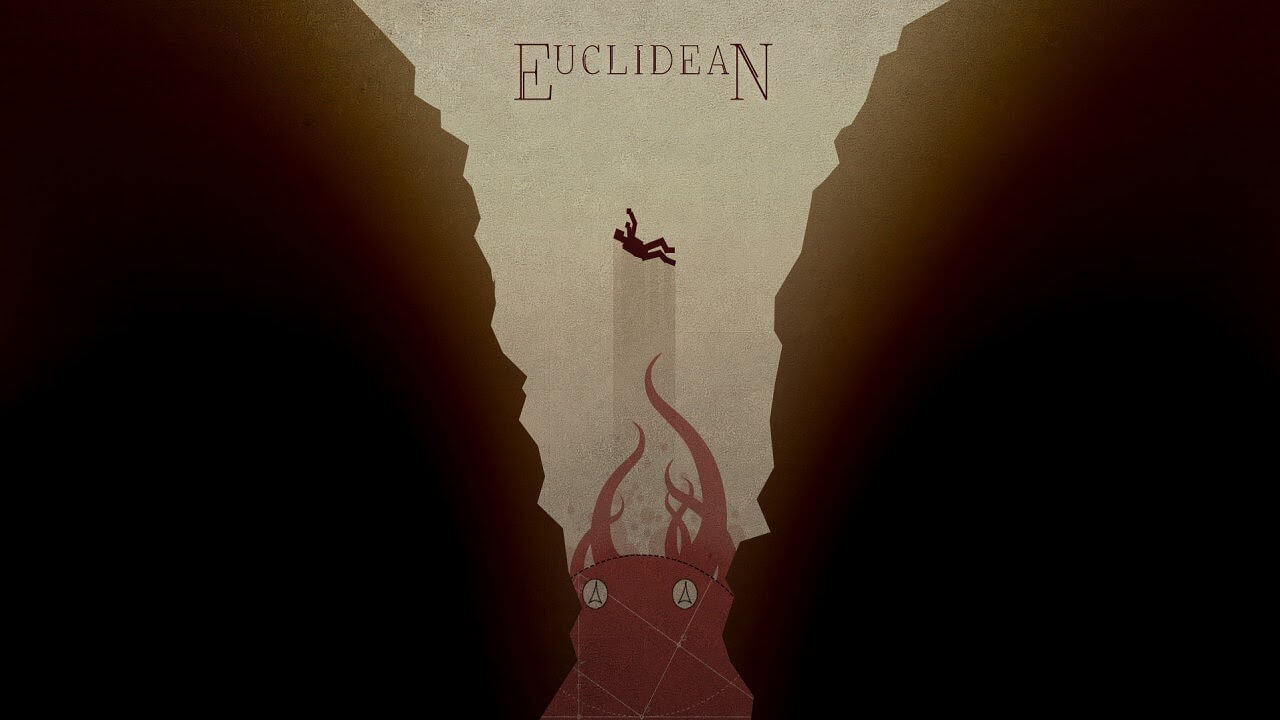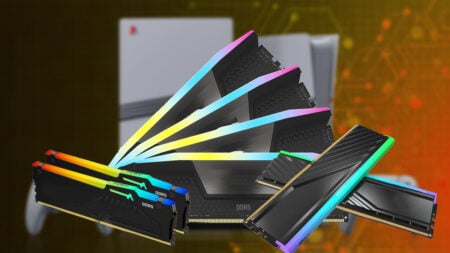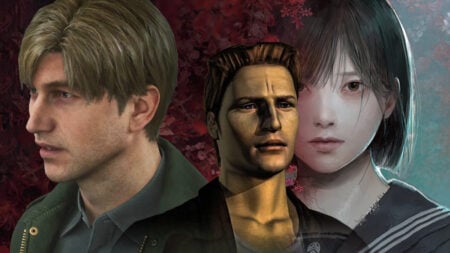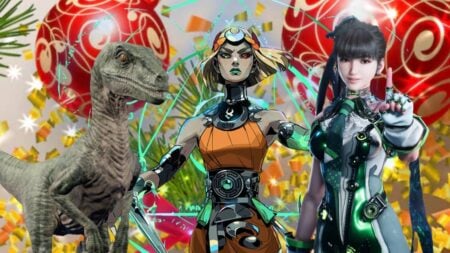Title: Euclidean
Version Tested: PC
Available on: PC
Developer: Alpha Wave Entertainment
Publisher: AAD Productions
Genre: Horror, Adventure, Falling Simulator, Indie, Puzzler
Official Site: https://alphawaveentertainment.com/project/euclidean/
Release Date: September 25th, 2015
Where to Buy: Steam, Humble Store
The term Euclidean is derived from the Alexandrian-Greek mathematician Euclid’s work in geometry. Generally speaking, a “Euclidean Space,” is used to describe higher dimensions in geometry. Alpha Wave Entertainment couldn’t have found a singular word more perfectly fitted for their game. The game has the player falling through geometric horrors, in an otherworldly dimension, there couldn’t be a better title.
Euclidean is a Steam VR (Virtual Reality) game ready to take advantage of Oculus Rift and the HTC Vive. Even playing it without the headgear you can get a feel for how visually incredible this would be in VR. Free falling through a thick, sea-like fog, with misshapen creatures lurking throughout, hoping to take a bite out of the player. It’s an experience ripe for the peripherals. Experience is the key word to focus on here as Euclidean is mostly lacking in the gameplay department.
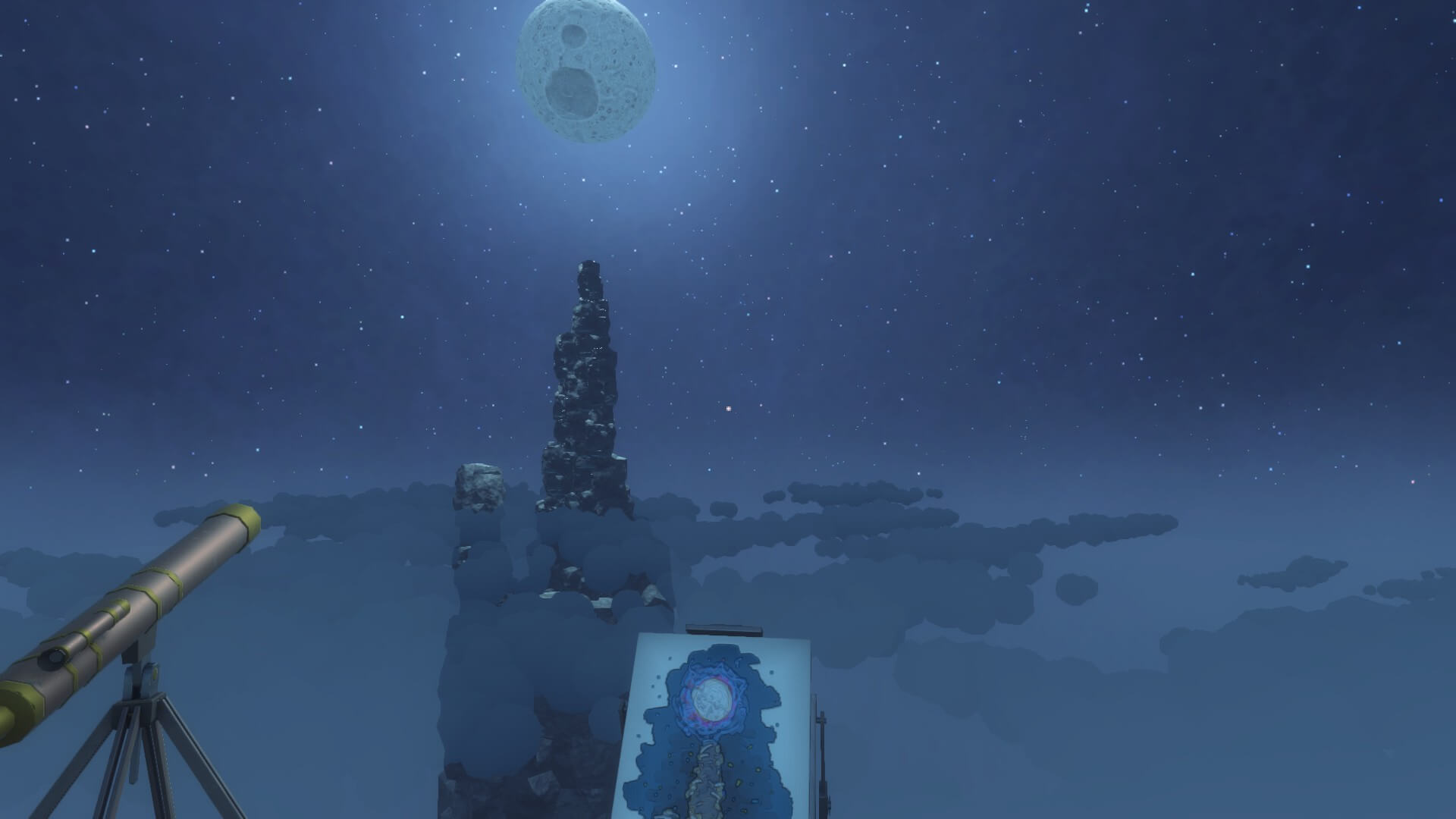
Upon starting up the game, players find themselves on a mountaintop, alone, with nothing but a telescope and the sight of the night’s sky. From here on out, the game does a poor job of explaining what exactly you’re supposed to be doing. I spent a few minutes just clicking around the mountaintop before I realized what I had to do. Admittedly once I did, the result was quite brilliant. Euclidean starts once the player stares up at the moon. Once the player is looking at the luminous orb, almost immediately the planet starts shifting and breaking apart into a goo of varying shapes, consuming the player in a visually spectacular moment (One that would only be more of a spectacle in VR). Then the player is transported to the first level. Dubbed “The Doorstep”, this level serves as a tutorial for the general gameplay of Euclidean, but a very light one at that. You’ll be told you can move with the WASD keys (very, very slowly) and can phase through enemies with E. It is only after you hit the ground running on level two, you’ll realize you have much to learn.
In level two I died twenty-two times, I know that exact number because the game has a death counter on the stage select menu. The next highest death count I had for a level was eight. It took me twenty-two deaths and twenty-two subsequent trips to the loading screen, which gives players tips, to finally figure out the nuances of the game. After dying over and over, and being educated by the tip screen, you then realize that when you phase you can track enemies movements, and that different enemy types have different movement patterns, etc. This information would have been great to learn during the painfully slow tutorial level, prior to my twenty-two deaths. Which speaking of painfully slow, this game needs a button to let you speed up your fall. Falling in Euclidean feels like falling with a parachute, a parachute that is somehow being dragged through the mud. After dying a handful of times on the same part, you have to slog through the first section you already mastered to get to the moment you screwed up on. Without an ability to speed up your fall you’re left gliding down at a snails pace, it is an unfortunate punishment and makes learning the levels a sometimes grueling and monotonous grind.

Other than the difficulty spike in the beginning, mostly in part to being foreign to how the game plays, Euclidean is a rather easy and brief game. The game is about one to two hours long and there are three different difficulty modes – weirdly enough they’re Hard, Nightmarish, and Impossible. – I played on Nightmarish, assuming it was the game’s equivalent to normal. You can also toggle permadeath to give yourself a real challenge, although be prepared to repeat the grueling descent ad nauseam if you choose permadeath. Euclidean struggles with getting the difficulty right throughout it’s two hours. Whether it’s the lackluster tutorial, the notion that hard is the easiest mode or the fact that the last two levels are the simplest in the game, difficulty balancing is not a strength for Euclidean. Within the nine stages, the level of challenge isn’t a gradual incline, one that applies the knowledge you’ve gained, it’s completely random as to which level is harder. I highly doubt I’m an outlier either. Going from a standout level that has you traveling through what appears to resemble a human artery – a tight and claustrophobic level with various enemy types to contend with – to the sorry excuse for the follow-up level, feels jarring for the difficulty and pacing of the game. Pacing and difficulty issues aside, there were, however, a few notable bright spots during my time with Euclidean.
When Euclidean comes together it feels very much like a unique and whimsical puzzle/platformer hybrid. You’re navigating obstacles by free falling and phasing through the right parts of the map, and avoiding enemy patterns. It’s learning enemy behavior in Euclidean, whether they travel up and down, or phase in and out, etc that make Euclidean feel a tad like a puzzle game. While the navigation of where you’re falling, as well as the timing of the phase move, is more in line with the timing of a platformer. Once you master the nuances, figuring out the solution to a level is a mostly satisfying experience full of close calls. Close calls with some seriously cool enemy design. The enemies are purposely tough to see through the thick atmosphere, but the ones you do see are intriguing and monstrous amalgamations of shapes. The art design doesn’t stop at the monsters either, the real winner here is the environment.
The environment and atmosphere of Euclidean are arguably the game’s strongest point and the reason I personally pushed through to the ending. Ranging from vast and expansive, to tight and claustrophobic, each level feels unique enough to want to see what’s next. Alpha Wave Entertainment use a variety of colors to really enhance the feel of certain levels, whether it was the intense poisonous green of “The Awakening” level or the deep blood red of “The Battle,” each level feels visually unique. The uniqueness doesn’t stop at color either, some levels have an obstacle in their setting that require a different approach. For instance in “The Descent” the player finds themselves falling down a spiraling staircase, while in “The Embrace” the player navigates the aforementioned artery-like tunnel. It’s a shame only a few of the nine stages offer that kind of inventiveness and challenge. These moments are the highlights of Euclidean, especially when you couple them with the excellent sound design. The sound really serves both the art style and the horror themes of the game. Whether it’s the screams of your character as he gets slammed by an enemy creature, or the soundtrack that varies between deep pulsating bass tones, to an airy and spacey tune, one that reminds you just how small you are in this world. The sound design is commendable. I should also address how perfectly dreadful the omnipresent voice that speaks to you is. The voice serves as a tool to deliver the player character warnings, as well as a bit of story…emphasis on a “bit.”
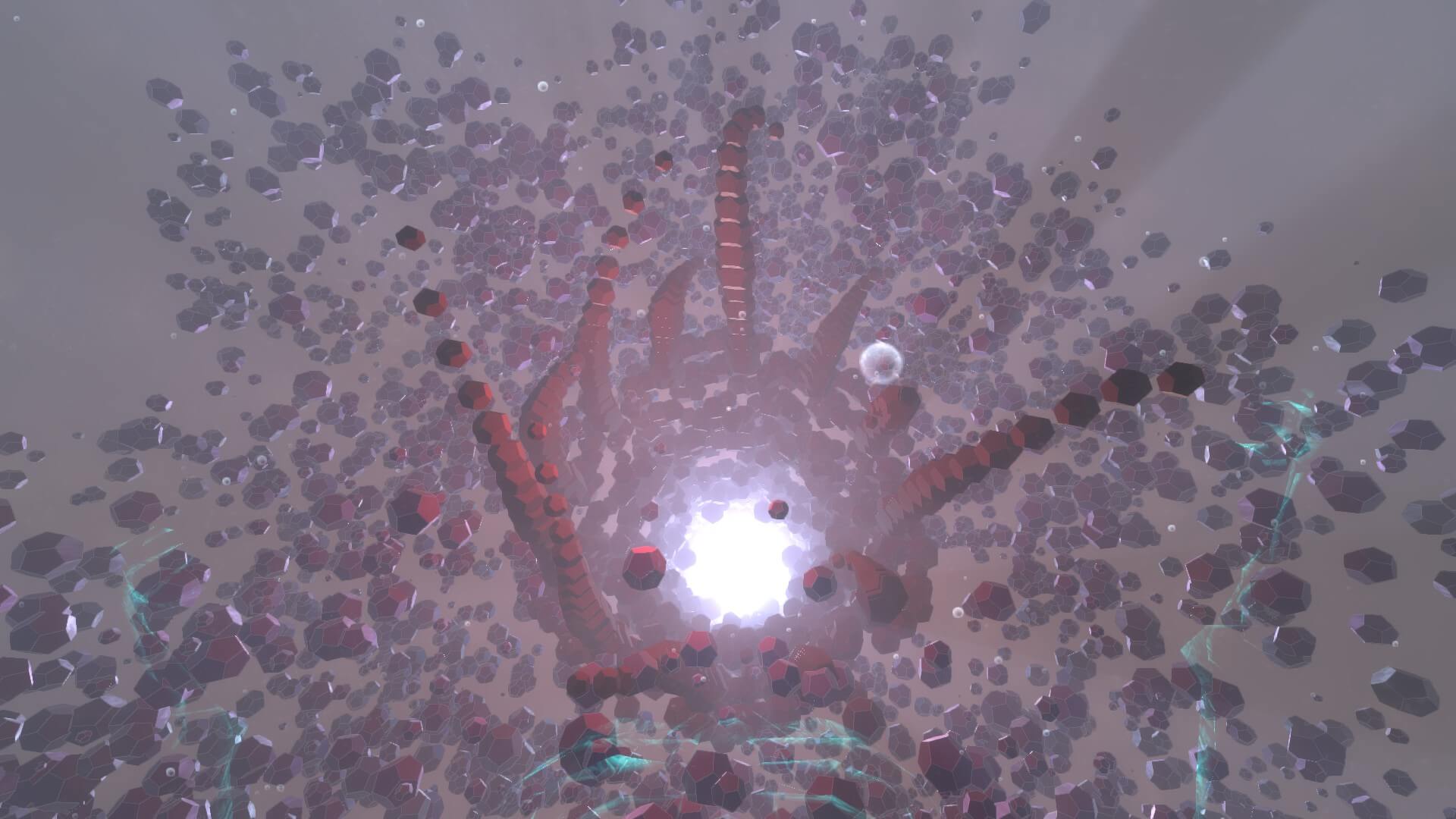
I wish Alpha Wave Entertainment worked to create a more fleshed out story. The world inside of Euclidean begs to be explored more, and it’s disappointing that what’s there is so sparse. It is barely enough to keep the player curious about why they’re even in this horrifying space. The conclusion is ambiguous, as well as everything leading up to the ending. Although I usually enjoy ambiguity in my storytelling, it has to be earned. I have a few theories as to what the overall narrative meant, but there’s really not much to dig into. The lack of depth is a huge let down when the world is so fascinating. Ambiguity is great when there’s details to chew on, but this is more like story soup, or an appetizer. Albeit a really funky and cool looking meal. I’d have liked if the players goal in the game was clearer, or the omnipresent voice’s purpose was more fleshed out. There’s a multitude of questions in Euclidean and a dearth of answers, don’t come expecting much of a story.
While the story is unfulfilling, the difficulty sporadic, the gameplay repetitive and slow, to see Euclidean as just a game to play is missing much of the point. The visual and sound design of Euclidean are what make it something worth experiencing at the end of the day, especially when and if you can in VR. The day I get my hands on one of those bad boys you can bet your right hand I’m going to try this experience again. Alpha Wave Entertainment have created something supremely weird, creepy, and wholly unlike anything out there, even if it fumbles more than I’d like. For its four dollars asking price, I can’t be too hard on it, however, it’s hard to recommend as a game.
[embedyt] https://www.youtube.com/watch?v=khB-8BHdmBo[/embedyt]
- Gameplay: Limited gameplay, freefalling simulator, extremely light interactivity, slight puzzles
- Graphics: Consistent 60 FPS coupled with a unique visual style
- Sound: The soundtrack works to amplify the horror elements of the game
- Presentation: Ripe for VR
[review]

